If you buy via any of our links, there will be no additional cost to you, and we will receive a tiny commission. More information is available on our Affiliate Disclosure page.
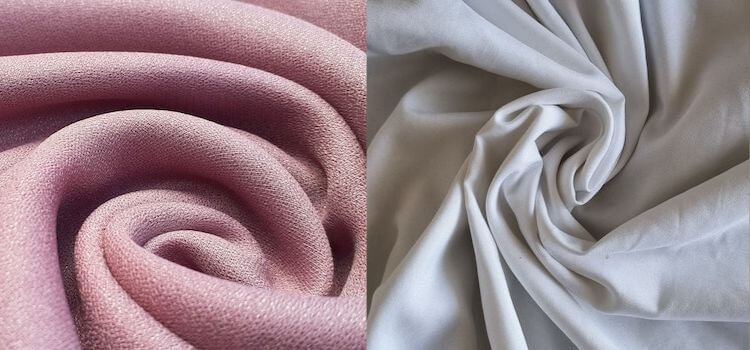
Modal vs Cotton
Modal vs Cotton: Modal is a light and wicking moisture fabric derived from maple trees. Cotton, a natural fabric, is both strong and comfortable.
In the field of textiles, fabric selection is critical in defining the comfort, feel, and utility of garments and other textile goods. Modal and cotton are two regularly used textiles that are appreciated for their comfort and flexibility.
These fabrics have distinct properties and are favored for a variety of applications ranging from everyday clothes to home textiles. In this investigation, we will look at the various properties of modal fabric and cotton fabric, highlighting their similarities and contrasts. Make it valuable and one-of-a-kind.
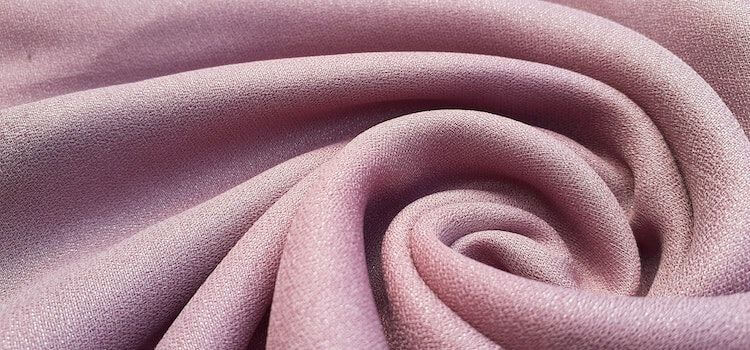
What is Modal Fabric?
Modal is a semi-synthetic fabric manufactured from the pulp of beech trees, usually European beech trees. It belongs to the rayon fabric family, which is noted for its softness, breathability, and moisture-wicking characteristics.
Modal is made using a chemical manufacturing technique that converts natural cellulose fibers from beech wood into a textile material. The final fabric is exceptionally soft and silky and drapes beautifully. Modal is well-known for its velvety feel and is frequently used in a variety of apparel items such as underwear, pajamas, T-shirts, and dresses.
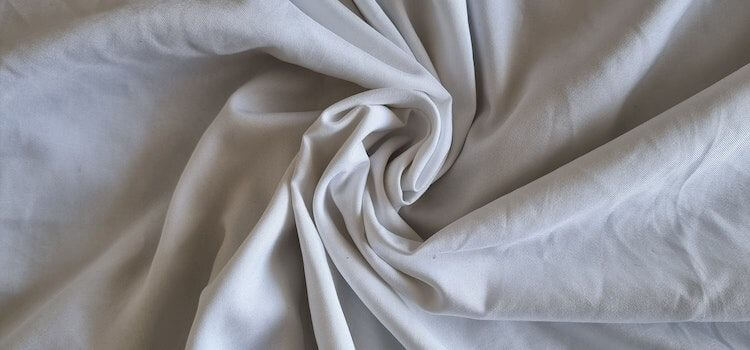
What is Cotton Fabric?
Cotton, on the other hand, is a natural fiber formed from the fluffy seed fibers of the cotton plant. It is one of the world’s oldest and most commonly used textile materials.
Cotton is well known for its breathable qualities, comfort, and adaptability. These textiles are utilized in many different goods, such as T-shirts, jeans, bed linens, and towels. It is valued for its natural, hypoallergenic characteristics as well as its ability to give comfort in a range of temperatures.
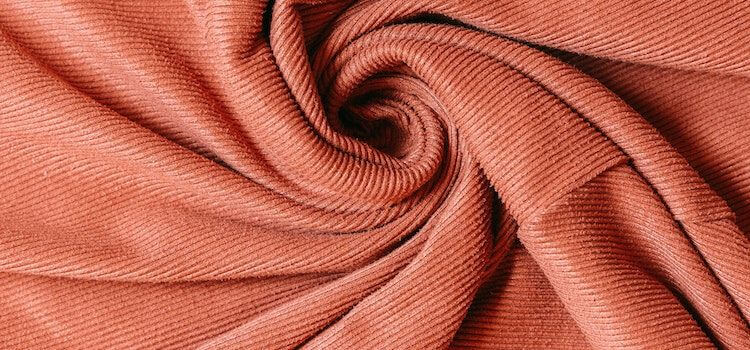
Modal vs Cotton: Which Fabric is Softer?
Modal fabric is often thought to be softer than cotton. It is well-known for its opulent softness and silky texture. Modal, made from beech wood pulp, produces a fabric with thin, silky strands that feel wonderfully soft against the skin.
Modal’s extraordinary softness is frequently compared to that of natural silk, making it a popular option for undergarments, pajamas, and T-shirts where comfort and a delicate touch are highly appreciated.
Cotton, while similarly soft, has a coarser feel than modal. Cotton softness varies based on the kind of cotton and the weave or finish of the cloth.
Softer cotton kinds include Egyptian cotton and Pima cotton, which are recognized for their long and delicate threads.
This is typically viewed as having better softness in direct comparison, mainly when used in intimate clothing and loungewear.
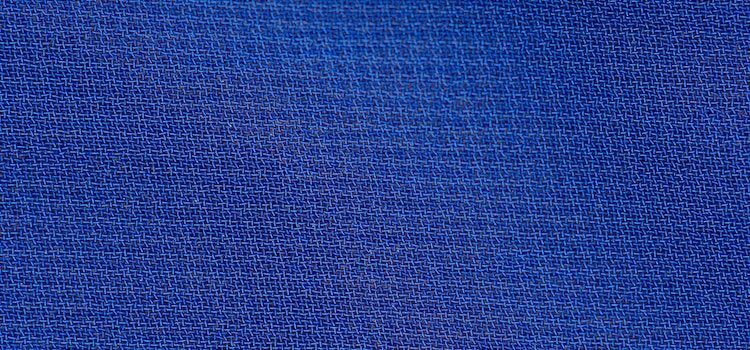
Modal vs Cotton: Which Fabric Absorbs Moisture Better?
Modal fabric is noted for its outstanding moisture-wicking capabilities, making it more efficient than cotton at absorbing moisture.
When moisture, such as perspiration, comes into touch with modal fabric, it absorbs it rapidly and efficiently and transfers it away from the skin’s surface. This keeps you dry and comfortable, especially during vigorous activity or in hot and humid weather.
Cotton, while capable of absorbing moisture, may not be as effective in wicking moisture as modal. These fibers can hold water for extended periods, perhaps resulting in a wet or sticky feeling in humid situations.
Cotton’s inherent absorbency, on the other hand, may still give comfort, and it is frequently preferred for its breathability.
Modal fabric is the preferred choice for moisture absorption and rapid drying because of its great moisture-wicking qualities.
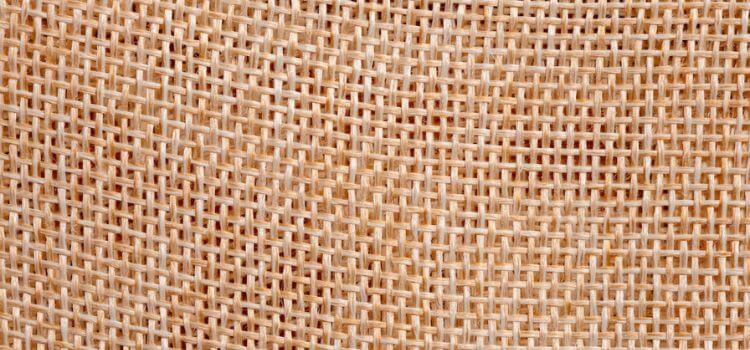
Modal vs Cotton: Which Fabric Allows More Air to Circulate?
Both modal and cotton textiles are breathable, enabling some air to move; however, modal fabric allows better air circulation than cotton.
The high breathability of the modal is due to its tiny, silky fibers and the production process, which results in a fabric with an open structure.
This allows air to circulate easily through the fabric, making it ideal for warm-weather clothes and athletics. The breathability of Modal aids in the regulation of body temperature and the prevention of overheating.
Cotton is also breathable and allows air to circulate; however, the amount of circulation varies according to the weave, weight, and thickness of the cotton.
Lightweight cotton materials are more breathable and appropriate for warmer weather, while heavier cotton may provide superior insulation in lower temperatures.
If you value air circulation and breathability in your clothing, both modal and lightweight cotton are good options, with modal having a tiny advantage in terms of breathability.
Modal vs Cotton: Which Fabric has More Stretch?
Modal fabric offers more excellent stretch than cotton cloth. These fibers’ inherent qualities, originating from beech tree pulp, contribute to their stretchiness.
Modal fibers are highly flexible, allowing the fabric to stretch and rebound effectively while under strain.
Because of this property, modal is a popular choice for apparel items that require a high level of elasticity and comfort, such as sportswear, leggings, and undergarments.
Cotton, while not devoid of elasticity, has less intrinsic stretch than modal. The degree of freedom in cotton fabrics varies based on elements such as cotton type, weave, and any elastane or spandex fibers added.
Cotton is commonly used in apparel where stretch is not required, such as T-shirts and denim.
Modal fabric is more likely to deliver a pleasant and stretchy experience than cotton if you prefer elasticity and flexibility in your apparel, especially for athletic or form-fitting wear.
Modal vs Cotton: Which Fabric is More Durable?
Cotton fabric is often more long-lasting than modal fabric. Cotton is well known for its tenacity and resistance to frequent washing and wear.
High-quality cotton textiles, such as those manufactured from Egyptian cotton or Pima cotton, are well-known for their durability. Cotton fibers are resistant to wear and tear due to their intrinsic strength and resilience.
While coveted for its softness, moisture-wicking characteristics, and elasticity, modal fabric may not be as durable as cotton. When compared to cotton fibers, modal fibers are finer and more delicate.
As a result, modal textiles may be more prone to pilling and may lose their softness and integrity with extended usage and washing.
However, the longevity of modal and cotton textiles varies based on factors such as fabric manufacturing, weave, and the precise fiber combination employed.
Cotton is the recommended fabric for long-term durability due to its well-established track record of withstanding the rigors of regular use.
Modal vs Cotton: Which Fabric is Less Prone to Pilling?
Cotton fabric, in general, is less prone to pilling than modal fabric. Pilling, the creation of tiny, fuzzy balls on the surface of a fabric, is impacted by various factors, including fiber length, fineness, and weave.
Cotton fibers are often longer and more substantial than modal fibers, which are finer. Longer strands are less prone to breaking and forming pills.
Cotton cultivars noted for their long fibers, such as Egyptian cotton and Pima cotton, are particularly resistant to pilling.
Furthermore, the tight weave of many cotton textiles contributes to their longevity and pill resistance.
While coveted for its softness and comfort, the modal fabric may contain shorter and finer threads, making it more prone to pilling, especially with regular wear and washing.
Modal’s smoother surface may also lead to pilling since there is less friction to remove stray fibers.
Follow care recommendations, use mild washing procedures, and avoid abrasive or rough surfaces during use and laundering to reduce pilling in both modal and cotton textiles.
Modal vs Cotton: Which Fabric is Less Prone to Fading?
When compared to modal fabric, cotton fabric is less prone to fading. A fabric’s color retention is determined by a number of factors, including the type of dye used, the fabric’s manufacturing, and exposure to sunshine.
Cotton holds its color well over time, especially when dyed using high-quality, colorfast dyes. These fabrics used in apparel, bed linens, and household textiles are particularly susceptible to this. Cotton fibers’ intrinsic tenacity contributes to the fabric’s color fidelity.
While the modal fabric is noted for its ease and softness, it may be more prone to color fading, especially when exposed to direct sunlight for an extended period. Fine modal fibers absorb and release colors differently, which may result in color variations over time.
This is why it’s essential to keep modal clothing away from direct sunlight and to follow care recommendations to maintain its color.
If color retention is essential, cotton textiles, particularly those created with high-quality dyes, are often a better choice than modal.
However, basic care methods can help both cotton and modal textiles last longer.
What Types of Clothing are Made From Modal and Cotton?
Modal and cotton textiles are used to make a variety of clothing products, each with its own set of characteristics to appeal to different preferences and demands. The following are some examples of apparel constructed from modal and cotton:
Modal-based clothing:
Underwear:
Modal is a popular fabric for underwear, such as panties, bras, and undershirts, due to its softness and moisture-wicking characteristics.
Pajamas:
The rich texture and breathability of the modal make it excellent for pajama sets, giving a restful and pleasant night’s sleep.
Tops & T-shirts:
Modal is frequently used to make T-shirts, tank tops, and blouses because it has a silky-smooth feel on the skin.
Dresses:
Modal gowns are praised for their comfort, drape, and elegance. They can be used in both informal and formal clothing in various situations.
Activewear:
Because of its stretch and moisture-wicking properties, modal is a popular fabric for activewear, such as yoga pants, leggings, and sports bras.
Loungewear:
Modal loungewear, including lounge pants and robes, offers a combination of comfort and style for relaxing at home.
Intimate Apparel:
Because of its softness, breathability, and stretch, modal is often used for bras, panties, and camisoles.
Cotton-based clothing:
Tops & T-shirts:
Cotton T-shirts are wardrobe essentials that come in a variety of designs such as crew neck, V-neck, and graphic tees.
Bottoms and Jeans:
Cotton denim is the traditional fabric for jeans and casual pants, and it is noted for its durability and adaptability.
Blouses and shirts:
Cotton shirts and blouses are appropriate for both formal and informal use since they are breathable and have a sharp appearance.
Dresses:
Cotton sundresses and casual dresses are ideal for warm weather because they provide comfort and a relaxed look.
Shorts:
Cotton shorts are perfect for summer and outdoor activities since they are breathable and easy to move in.
Sleepwear:
Cotton pajamas and nightgowns are relaxing options for bedtime and leisure.
Outerwear:
Cotton is utilized for layering in lightweight jackets, hoodies, and sweatshirts.
Socks with Underwear:
Cotton is a popular fabric for socks, briefs, and undershirts because it is breathable and comfortable.
Sweaters:
Cotton sweaters keep you warm and comfortable in cooler temperatures while also allowing you to breathe.
Accessories:
Cotton’s softness and adaptability make it ideal for accessories such as scarves, hats, and gloves.
Both modal and cotton have distinct qualities that lend themselves to various sorts of apparel, allowing people to pick depending on comfort, style, and utility for a variety of situations and weather circumstances.
Modal vs Cotton: Which Fabric is Fetter for Hot Heather?
Both modal and cotton are good choices for hot weather, although modal fabric is frequently thought to be a better choice because of its unique qualities.
Hot Weather Modal:
For various reasons, modal fabric is an ideal option for hot weather:
Perspiration-absorbing:
Modal has excellent moisture-wicking characteristics, which means it can swiftly collect perspiration and moisture from your skin and transmit it to the fabric’s surface. This keeps you dry and comfortable in hot and humid weather.
Ventilation:
Modal is very breathable and lets air flow, keeping heat away from your skin. This breathability aids in temperature regulation, keeping you cool.
Suppleness:
The silky-smooth texture of the modal feels good on the skin, lowering the danger of chafing or discomfort in hot weather.
Lightweight:
Modal fabric is often lightweight, making it easy to wear in hot weather without feeling heavy or constricting.
Protection against the sun:
Modal possesses inherent UV resistance and hence offers some protection from the sun’s damaging rays.
Cotton is Ideal for Hot Weather:
Cotton is likewise a good option for hot weather. However, it has somewhat different properties:
Ventilation:
Cotton is very breathable and allows air to flow, allowing you to stay calm.
Pleasantness:
Cotton’s innate softness and comfort make it a popular option for summer clothes such as T-shirts, shorts, and sundresses.
Multi-functionality:
Cotton is available in a range of weights, from lightweight to heavyweight, allowing you to select the optimum thickness for the temperature and amount of activity.
Absorbency:
While cotton may absorb moisture, it can also retain moisture longer than modal, which might result in a wet sensation in particularly humid situations.
Both modal and cotton are appropriate for hot weather, but the modal’s better moisture-wicking characteristics and capacity to keep you dry make it the ideal choice for severely hot and humid regions or heavy physical activity.
Cotton, on the other hand, is adaptable and comfy in hot weather, making it an excellent choice for everyday wear and casual trips. Finally, your decision may be influenced by personal tastes as well as the specific activities you have planned.
Modal vs Cotton: Which Fabric Performs Best in Cold Weather?
In general, cotton is a better choice for cold weather than modal fabric. This is why:
Cold Weather Cotton:
Insulation:
Cotton’s inherent insulating characteristics aid in the trapping of warm air close to the body. This makes it a good choice for cooler weather because it gives some warmth.
Permeability:
Cotton is breathable, enabling moisture and perspiration from the skin to dissipate. This is especially crucial in cold weather to avoid wetness and preserve comfort.
Layering:
Cotton is an excellent fabric for cold-weather layering. Cotton T-shirts, long-sleeve shirts, sweaters, and jackets may be worn to build warmth-retaining layers.
Contentment:
Cotton’s softness and comfort make it an excellent choice for cold-weather clothes, such as pajamas, thermal underwear, and socks.
Robustness:
Cotton materials are rigid and can resist cold-weather use and repeated washing.
Flexibility:
Cotton may be used to make a variety of cold-weather garments, such as sweaters, scarves, gloves, and caps.
Cold Weather Modal:
While coveted for its softness and moisture-wicking characteristics, the modal fabric is not the most excellent choice for cold weather for various reasons:
Inadequate Insulation:
Modal gives little insulation. It is intended to drain moisture away from the body and keep you cool, which might be inconvenient in cold weather.
Lightweight and thin:
Because modal is often thin and lightweight, it is ineffective at keeping heat at cooler temperatures.
Hygroscopic:
Modal’s moisture-wicking characteristics may make you feel colder in cold weather since it draws moisture away from your body, perhaps causing discomfort.
Cotton is the more practical choice in cold weather because of its insulation and capacity to give warmth while being breathable.
Modal, with its emphasis on moisture wicking and cooling, is better suited for hot weather or activities that need moisture control.
Modal vs Cotton: Which Fabric is Better for Activewear?
When it comes to sportswear, modal, and cotton perform distinct functions, and your decision is determined by your unique activity and preferences. Here’s a breakdown of their activewear suitability:
Activewear Modal:
Modal fabric is a good choice for various forms of activewear, especially those involving moderate-intensity exercises like yoga, pilates, and low-impact workouts. Here are some reasons why modal could be a wise choice:
Stretch:
Modal fabric provides excellent stretch and recovery qualities, allowing for a full range of motion during flexible activities.
Moisture-evaporative:
Modal’s moisture-wicking characteristics keep you dry by absorbing and draining perspiration quickly, making it pleasant to wear throughout exercises.
Silky:
The soft, smooth texture of the modal lowers the possibility of chafing or discomfort during physical exercise.
Respirability:
Modal is breathable, which aids with body temperature regulation during exercise.
Ease:
Modal’s comfort factor is excellent for sportswear that you wear for lengthy periods during exercises.
However, modal may not be the most excellent choice for high-intensity or sweat-inducing sports since it lacks the moisture-wicking and quick-drying characteristics of some synthetic performance fabrics.
Activewear Cotton:
Cotton is appropriate for several forms of sportswear, such as informal exercises, strength training, or low-impact activities. Here are some of its benefits:
Airiness:
Cotton’s breathability keeps you cool during exercises, especially in warm weather.
Comfy:
Cotton is soft and soothing on the skin, lowering the chance of irritation or discomfort during physical activity.
Layering:
Cotton may be utilized as a foundation layer for cold-weather exercises, providing insulation and moisture-wicking when adequately layered.
Fiber From Nature:
Some people prefer the natural feel of cotton in their sportswear over synthetic fabrics.
Cotton may not be the most outstanding choice for high-intensity exercises or those requiring moisture control since it can absorb and hold moisture, thus causing discomfort.
The type of exercise, intensity, and personal preferences all influence the choice of modal versus cotton for activewear.
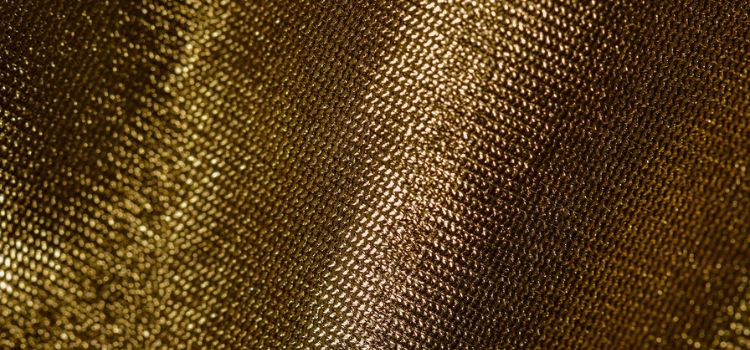
Modal vs Cotton: Which Fabric is Better for Formalwear?
In general, cotton is a better choice for formalwear than modal fabric. Here are some of the reasons why cotton is preferred for formal wear:
Cotton is ideal for formal attire.
Beautiful Appearance:
Cotton textiles, especially those with a smooth texture, such as poplin or sateen, provide a polished and sophisticated appearance that is appropriate for formal occasions.
Crispness:
Cotton materials can hold creases and have a crisp appearance, which is essential for formal shirts, dress trousers, and suits.
Versatility:
Cotton is a flexible fabric that may be used for a variety of formalwear items such as dress shirts, blouses, trousers, jackets, and dresses.
Ventilation:
Cotton’s breathability promotes comfort throughout extended formal events such as weddings, banquets, and galas.
Longevity:
Cotton materials are long-lasting and can handle the stresses of formal occasions such as sitting, standing, and dancing.
Tailoring:
Cotton tailors well and may be fashioned into well-fitted formal clothing.
Color Persistence:
Cotton preserves color well and is less prone to fading, so your formal dress will retain its opulence over time.
Formalwear Modal:
Modal fabric is not commonly used for formalwear because of its unique properties:
Smoothness:
While modal is valued for its softness, it may lack the clean and structured appearance associated with formal clothes.
Drape:
Modal has a flowing drape that may not be suitable for fitted formal outfits with crisp lines and definite structure.
Hygroscopic:
For formal events where perspiration and moisture control are not primary considerations, the modal’s moisture-wicking qualities may not be required.
Aesthetic: Casual
Modal is frequently utilized in informal and easygoing clothing designs that are not generally linked with formalwear.
Cotton is the most popular fabric for formalwear because of its exquisite appearance, sharpness, and adaptability in producing fitted and polished styles. Modal, because of its softness and draping properties, is more suited for informal and comfortable clothes than formal and rigid apparel.
How is Modal Fabric Made?
Modal fabric is created by transforming natural cellulose fibers, often generated from beech tree pulp, into a soft and pleasant textile material. This is how modal fabric is typically made:
Harvesting and extraction of pulp:
The harvesting of beech trees, mainly European beech trees noted for their high cellulose content, is the first step in the process. The wood is chopped into little pieces, and the cellulose is removed chemically from the wood chips.
Chemical Production:
The extracted cellulose is subsequently dissolved in a chemical solution, usually sodium hydroxide (caustic soda), to produce cellulose pulp, a thick and sticky material.
Spinning:
To generate thin filaments, the cellulose pulp is driven through spinnerets, which are tiny pores or nozzles. When these filaments come into contact with a coagulating bath, generally containing sulfuric acid, they solidify.
Cleaning and neutralization:
To eliminate any remaining chemicals, the newly produced filaments are rinsed. They are then neutralized in order to reestablish their pH equilibrium.
Drying and Spinning:
The filaments are treated further and spun into yarn. The yarn is dried after turning to eliminate extra moisture.
Knitting or weaving:
Traditional textile machinery may weave or knit modal yarn into fabric. The intended fabric structure is created during the weaving or knitting process.
Finishing:
Modal fabric may be softened, dyed, or treated with extra treatments for wrinkle resistance or color retention to improve its qualities.
As a result, the fabric has a smooth, silky feel that is widely sought after for its softness, drape, and comfort. Modal fabric is well-known for its moisture-wicking capabilities, breathability, and ability to retain softness even after repeated washings.
It is frequently used in the manufacture of apparel products, including underwear, T-shirts, pajamas, and gowns, where comfort and a luxury feel are highly prized.
How is Cotton Fabric Made?
Cotton fabric is created from natural cotton fibers generated from the cotton plant’s fluffy seed strands. Several phases are involved in the process of converting these fibers into material:
Cultivation:
Cotton plants are grown predominantly in warm climates, such as the southern United States, India, China, and various portions of Africa. Cotton bolls (pods) carrying cotton fibers emerge from the plants.
Harvesting:
Cotton bolls are collected from the plants when they reach maturity. Modern mechanical cotton pickers or harvesters are frequently employed to gather cotton efficiently.
Ginning:
Cotton bolls are harvested and transferred to a cotton gin, where the seeds are removed from the cotton fibers. This is an essential step because it prepares the cotton for future processing.
Carding and Cleaning:
To eliminate any leftover contaminants, such as dirt and plant debris, the cotton fibers are washed. The fibers are next carded, which entails running them through carding machines that arrange the strands in a parallel fashion, resulting in a web or sheet of cotton fibers.
Spinning:
Spinning machines are used to turn carded cotton fibers into yarn. The fibers are twisted together during this procedure to generate continuous strands of cotton yarn.
Knitting or Weaving:
Cotton yarn is used to make fabric by weaving or knitting it. To make a woven cloth, the thread is intertwined in a crisscross pattern. Knitting is the process of looping yarn together to create a knitted material. The required fabric structure determines whether weaving or knitting is used.
Finishing and Dyeing:
After the cloth is made, it may be dyed to add color. Finishing procedures may also be used to improve the fabric’s qualities, such as softening, wrinkle resistance, or color retention.
Sewing and Cutting:
The final cotton fabric is cut into pattern pieces and sewed together to make garments, linens, and other textile products.
Cotton fabric is noted for its inherent breathability, softness, and adaptability. It’s found in a wide range of items, including T-shirts, trousers, dresses, bed linens, and towels.
Cotton’s adaptability to various weights, weaves, and finishes makes it a popular choice for a variety of applications.
Is Modal Softer Than Cotton?
Yes, modal fabric is frequently thought to be softer than cotton. Modal’s softness is one of its most noticeable characteristics, and it’s one of the main reasons why it’s so popular for various apparel items. Modal’s silky-smooth feel is due to the tiny fibers obtained from beech tree pulp, which many people find very pleasant on the skin.
While cotton is likewise noted for its softness, the superior softness of modal is frequently linked to the unique manufacturing process it goes through, as well as the fine and long fibers employed in its creation.
Modal’s rich texture and gentle touch make it a popular option for underwear, pajamas, and loungewear, where comfort and softness are highly desired.
Modal vs Cotton: Which One Is More Expensive?
Modal and cotton fabric prices might vary depending on criteria such as material quality, brand, and individual garment or textile product.
This fabric is frequently more costly than cotton cloth. This is due mainly to the modal production method, which entails a more complex chemical procedure to convert beech tree pulp into fibers.
Furthermore, the modal is noted for its sumptuous feel and softness, which may attract a high market price.
Cotton fabric, on the other hand, is readily accessible and comes in a variety of grades and pricing ranges. Conventional cotton is usually less expensive than modal cotton; however, the price varies depending on elements such as the kind of cotton (e.g., organic, Egyptian, Pima), the weave, and any additional finishing operations.
It’s vital to remember that the cost of modal and cotton varies greatly depending on the product and brand.
Furthermore, owing to ecologically friendly procedures, sustainable and organic solutions for both modal and cotton may be more expensive.
When making a purchase, evaluate the quality, durability, and your individual preferences to get the most excellent value for your needs.
Modal vs Cotton: Which Fabric is More Sustainable?
Modal and cotton fabric sustainability can differ based on a variety of factors, including agricultural techniques, processing processes, and the total environmental effect of each fiber. Here’s a comparison between modal and cotton’s sustainability:
Modal Fabric Durability
Source of Raw Materials:
Modal is made from the pulp of beech trees, mainly European beech trees. Because they grow swiftly and do not require substantial irrigation or pesticide usage, beech trees are often regarded as a sustainable supply.
Chemical Production:
Modal manufacture includes a chemical process that, if not well handled, might cause environmental issues. Some modal manufacturers, however, have implemented closed-loop manufacturing processes that recycle and reduce chemical waste.
Water Consumption:
When compared to cotton, modal often requires less water during cultivation. Beech trees grow in damp areas naturally, eliminating the need for heavy watering.
Biodegradability:
Modal is biodegradable, which means it will degrade naturally over time, lowering its environmental effect on landfills.
Energy Conservation:
Modal manufacturing is well-known for its energy efficiency, with some manufacturers employing renewable energy sources in their manufacturing processes.
Cotton Fabric Durability
Source of raw materials:
Cotton is a natural fabric generated from the seed fibers of the cotton plant. Cotton growing may be resource-intensive, necessitating large amounts of water, insecticides, and synthetic fertilizers. Organic and sustainable cotton farming techniques, on the other hand, are becoming increasingly widespread, lessening the environmental effect.
Use of Chemicals:
Chemical pesticides and fertilizers are frequently used in conventional cotton growing, which can have negative consequences on ecosystems, soil, and water quality. Organic cotton growing eliminates or reduces the usage of harmful pesticides.
Water Consumption:
Cotton growing may be water-intensive, especially in irrigated areas. Water usage is reduced by using sustainable cotton farming strategies such as rain-fed cultivation and efficient irrigation.
Biodegradability:
Cotton is biodegradable and ecologically benign when adequately disposed of.
Energy Conservation:
Cotton manufacture may consume a lot of energy, especially during the processing and spinning steps. This impact can be mitigated by sustainable practices such as energy-efficient machines and renewable energy sources.
Both modal and cotton have advantages and disadvantages in terms of sustainability. Modal is typically seen as more environmentally friendly because of its effective use of water during growth; however, its chemical processing might be problematic.
Cotton, on the other hand, varies greatly depending on cultivation techniques, with organic and sustainable cotton solutions providing environmental advantages.
Look for certifications such as Global Organic Textile Standard (GOTS) for organic cotton and Lenzing Modal® for sustainably produced models to make an eco-friendly option. In the end, the sustainability of either cloth is determined by the specific procedures used in its creation.
Modal vs. Cotton Fabric Care
Because of their distinct qualities, modal and cotton textiles require slightly different maintenance. Here are some care instructions for each fabric:
Modal Fabric Care
Washing-up:
Modal garments should be washed in cold water with comparable colors. Using cold water helps to keep the color of the cloth and avoid shrinking.
Cleanser:
Make use of a gentle liquid detergent. Bleach and powerful detergents should be avoided since they can harm modal fabric.
Laundry cycle:
On your washing machine, select a mild or delicate cycle. This reduces the fabric’s wear and tear.
Dehydration:
Modal fabric may be machine-dried on low heat, but to avoid creases, take the clothes from the dryer when it’s still somewhat moist. Overdrying can cause fabric damage.
Pressing with an iron:
Modal fabric does not usually require ironing. To avoid direct contact, use a low-temperature setting on your iron and a cloth or towel between the iron and the material.
Storing:
Modal clothes should be stored in a cool, dry area away from direct sunlight to avoid fading and damage.
Cotton Fabric Care
Laundering:
Cotton clothes may be cleaned in the washing machine in either warm or cold water, depending on the care label requirements. Use a mild detergent once more.
Evaporation:
Cotton cloth may be machine-dried at medium to high temperatures. To avoid creases, remove the item from the dryer as soon as possible.
Flattening:
Cotton clothes may need to be ironed to keep their pristine appearance. Depending on the thickness of the cloth, use a medium to high heat setting. To make ironing simpler, spritz the fabric with water.
Bleach Treatment:
When using bleach on cotton, be cautious since it might weaken the fibers and cause fabric damage. Follow the care label recommendations and use bleach cautiously.
Preservation:
Cotton garments should be stored in a relaxed, dry environment. To avoid fading, avoid direct sunlight. To prevent stains from settling in, make sure your clothes are clean before storing them.
Reduction in size:
Cotton can shrink if washed or dried at high temperatures. Follow care label recommendations and consider air-drying sensitive cotton items to reduce shrinking.
For particular care recommendations, always refer to the care label on your clothes since some outfits may have special requirements.
Proper maintenance helps to preserve the quality and lifespan of modal and cotton textiles, ensuring that they continue to look and feel their best.
Some FAQs for Modal vs Cotton:
What is Modal Fabric, and How is it Made?
Modal fabric is a type of cloth manufactured from the pulp of beech trees. It is made via a chemical process that involves dissolving the pulp, spinning it into fibers, and weaving or knitting the yarns into fabric.
Is Modal Fabric Eco-Friendly?
Modal may be environmentally friendly if created sustainably. Look for models that have received environmental certification, such as Lenzing Modal, to ensure responsible manufacture.
Is Cotton Biodegradable?
Cotton, indeed, is biodegradable. It degrades naturally over time, making it an environmentally responsible alternative when disposed of appropriately.
Which Fabric is Better for Hot Weather, Modal or Cotton?
Modal is frequently used in hot weather because of its moisture-wicking and breathability qualities, which keep you cool and dry.
Can Modal Fabric Stretch?
Yes, the modal fabric offers excellent stretch and recovery capabilities, making it ideal for apparel that requires flexibility and comfort.
How Can I Care for Modal Clothing?
Keep up with the care directions on the garment label to keep your modal items in good condition. Typically, machine wash in cold water and dry on low heat.
Does Cotton Fabric Shrink in the Wash?
Cotton cloth can shrink if washed or dried at high temperatures. Follow care recommendations and use cold water and low heat settings to reduce shrinking.
Which Fabric is Better for Activewear, Modal or Cotton?
Because of its flexibility, moisture-wicking, and breathability, modal is an excellent choice for low to moderate-intensity exercises. Cotton is appropriate for low-impact or relaxed workouts.
Are there Sustainable Cotton Options?
Because of its flexibility, moisture-wicking, and breathability, modal is an excellent choice for low to moderate-intensity exercises. Cotton is appropriate for low-impact or relaxed workouts.
Can I Wear a Modal in Cold Weather?
Modal may not provide enough insulation for cold conditions on its alone. It is advised to layer modal with other warm clothing items.
Does Modal Fabric Fade Over Time?
Because modal fabric can fade after extended exposure to sunlight, it is best to keep modal items out of direct sunlight whenever possible.
Is Cotton Fabric More Durable than Modal?
Cotton fabric is often seen to be more durable than modal in the long run due to its ability to endure wear and washing.
Can I Find Formalwear Made from Modal Fabric?
Because of its softness and drape, modal is not commonly used for formalwear. Cotton is a popular fabric for formal wear.
Which Fabric is Less Prone to Pilling, Modal or Cotton?
Cotton is less prone to pilling than modal because cotton fibers are longer and more durable.
Are there any Allergenic Concerns with Modal or Cotton Fabric?
Modal and cotton are both natural fibers that are often hypoallergenic, making them ideal for anyone with sensitive skin or allergies. Individual sensitivities, however, may differ.
Conclusion
The final decision between modal and cotton fabric is based on your unique demands, tastes, and planned usage of the material. Here is a summary to assist you in making the right decision:
Modal fabric is appropriate if:
If you value softness and luxury comfort in your apparel, especially underwear, pajamas, and loungewear, the silky-smooth texture of modal fabric is a perfect choice.
Because of its remarkable moisture-wicking characteristics, the modal is excellent for athletic and hot weather clothes, keeping you dry and comfortable throughout physical activity.
Modal’s breathability is advantageous in hot conditions because it lets air flow, which helps regulate body temperature.
Modal provides a pleasant and stretchy feel if you value elasticity and flexibility in your apparel, especially for activewear or form-fitting outfits.
Some modal manufacturers encourage sustainability by employing environmentally friendly procedures and materials. For a more environmentally friendly option, look for a modal with environmental certifications.
Cotton fabric is recommended if:
Cotton is highly adaptable and may be used to make a variety of apparel and textile goods, such as T-shirts, jeans, and bed linens.
This is well-known for its durability and ability to endure repeated wear and washing, making it an excellent choice for everyday use.
This is a popular material for formal wear because of its exquisite look, sharpness, and ability to maintain creases.
Cotton is an excellent choice for cold-weather apparel and layering since it provides insulation and warmth.
Cotton is a classic and eco-friendly alternative for natural fibers in apparel and textiles, especially when manufactured utilizing sustainable processes.
Both modal and cotton are biodegradable, but cotton’s biodegradability makes it an environmentally benign choice when adequately disposed of.
The optimum option between modal and cotton is determined by your unique needs and the environment of use. When making your choice, consider the fabric’s qualities, your comfort preferences, and the environmental considerations that are most important to you.
Additionally, to guarantee you’re selecting a sustainable decision, read product labels for particular care instructions and environmental certifications.

